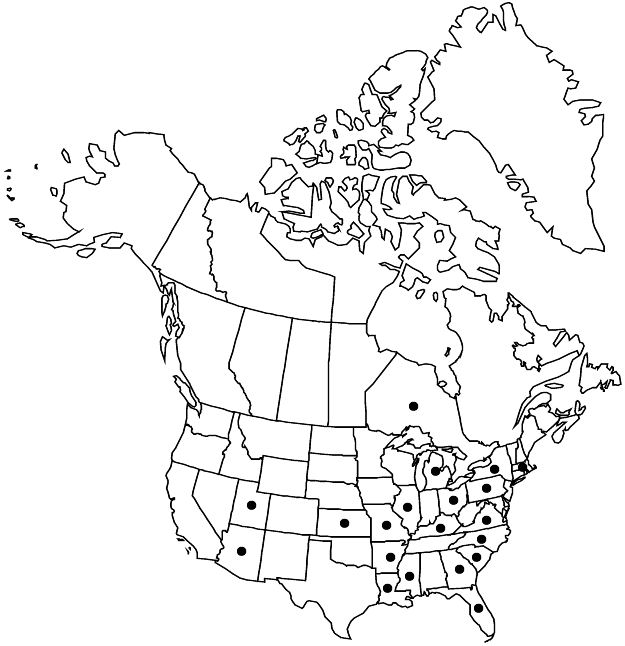Difference between revisions of "Cucumis sativus"
Sp. Pl. 2: 1012. 1753.
FNA>Volume Importer |
FNA>Volume Importer |
(No difference)
| |
Revision as of 22:45, 16 December 2019
Distribution

Asia, introduced also nearly worldwide.
Discussion
Varieties 2 (1 in the flora).
Records of cucumber cultivation appear in France in the ninth century, in England in the fourteenth century, and in North America by the mid sixteenth century.
Variety hardwickii (Royle) Gabaev (= C. hardwickii Royle) occurs in the northwestern Himalayas, the Eastern Ghats and Western Ghats, and the central plateau region of India. J. H. Kirkbride (1993) and C. Jeffrey (1980c, 2001) observed that it can be identified in its usual form but that morphological intergradation argues against its recognition as a distinct evolutionary entity with formal taxonomic status. W. J. J. O. de Wilde and B. E. E. Duyfjes (2010) agreed that C. hardwickii is not sharply demarcated from feral forms of C. sativus and they reduced its rank to forma within C. sativus. On the other hand, Cucumis hardwickii is isozymically distinct from C. sativus. L. D. Knerr and J. E. Staub (1991) found that it possesses alleles not present in the remainder of their samples of C. sativus. V. Meglic et al. (1996) found it to be isozymically distinct from 750 C. sativus samples. Without consistent morphological differentiation between Cucumis hardwickii and the highly variable domesticated and feral forms of C. sativus in the narrow sense, but with an apparent molecular distinction, their recognition at varietal rank seems appropriate. Rank of forma (as interpreted here) would imply that C. hardwickii is a populational variant.
Selected References
None.